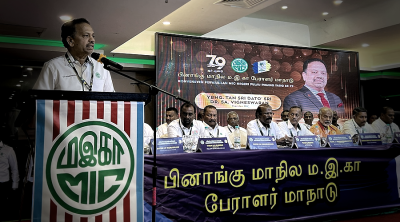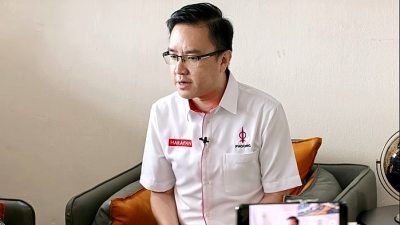
On October 13, Prime Minister cum Finance Minister Datuk Seri Anwar Ibrahim announced the Malaysia Visa Liberalization Plan that will include, among others, improved visa-on-arrival facilities, social visit passes (PLS) and multiple entry visas, aimed at wooing more investors and tourists from China and India.
The prime minister said tourism and manufacturing industries were major contributors to the country’s economic development, and as such the government would introduce the visa liberalization plan targeting mainly tourists, investors, and graduated international students (offering long-term work permits to meet domestic needs for professional workforce).
Less than a month after the announcement was made, Minister of Tourism, Arts and Culture Tiong King Sing announced that Malaysia would liberalize tourist entry requirements for Chinese and Indian tourists, whereby Chinese and Indian nationals arriving on chartered flights can apply for visa-on-arrival through travel agencies registered with Tourism Malaysia.
Tiong said his ministry would continue to liaise with the home affairs ministry to expand the 15-day VOA facility for Chinese and Indian nationals arriving on chartered flights, to all other non-chartered flight passengers.
He said he hoped to hear more good news from the home ministry next January in order to facilitate the entry of international tourists.
Tiong also said his ministry had been positively communicating with the immigration department in hope of easing the entry procedures for international tourists and make Malaysia their preferred holiday destination.
Malaysia’s VOA facility was initially extended to Chinese and Indian nationals arriving through a third country, such as Singapore, Thailand, Indonesia and Brunei, with the condition these tourists hold valid visas for the aforementioned countries.
What we can’t really understand is why these Chinese and Indian tourists must first spend their holidays in a third country before they can enjoy our VOA facility.
Following the collaboration between the tourism and home affairs ministries, the latter has issued an official notice that the conditions for the revised version of VOA facility for Chinese and Indian nationals include:
1. These tourists can apply for VOA through travel agencies registered in Malaysia, but for the time being this facility will only be extended to passengers on chartered flights.
2. The travel agencies have the obligation to ensure that tourists arriving on chartered flights leave the country before the expiry of their visas.
3. The travel agencies must ensure that these tourists submit their travel documents and the arrival lists for immigration verification.
4. The tourists must not overstay the 15-day period, and must provide proof of their return tickets and hotel reservations.
With competitive cost of traveling, relatively safe environment and attractive destinations, we expect the country’s tourist industry to return to the pre-pandemic good days. But, this doesn’t seem to happen!
In short, the Malaysian government has already extended the VOA facility to Chinese and Indian nationals arriving on chartered flights, but we hope this facility can be extended to all tourists as soon as possible, as tourism is a very important sector in the country’s economy.
Well, the Siam Paragon shooting in Bangkok may have thwarted Thailand’s ambition to draw five million Chinese tourists to the kingdom this year, but will the Chinese therefore re-route their travel plans to Malaysia instead?
Indeed, compared to countries like Vietnam, Myanmar, Laos and Cambodia, we do have an obvious edge, but do we have any tourist-friendly measures to lure these Chinese over?
Before the coronavirus pandemic in 2019, Malaysia recorded 26.1 million tourist arrivals, generating a total of RM86.1 billion in travel-related revenue (such as hotel accommodation, F&B, transportation, travel agencies and retail industry) or contributing 6% to the country’s GDP while creating 3.5 million full-time and part-time job opportunities.
In the past, most of the tourists to Malaysia used to come from neighboring ASEAN countries, China, India, Taiwan, South Korea, Australia and the United Kingdom.
With the liberalization of the tourist industry post-pandemic, Malaysia is targeting 16.1 million tourist arrivals this year with a tourist revenue of RM49.2 billion.
With the ringgit on continued downtrend, by right this puts Malaysia in an advantageous position in wooing more international tourists. Unfortunately, Malaysia aside, many regional countries have failed to meet their targets too.
With competitive cost of traveling, relatively safe environment and attractive destinations, we expect the country’s tourist industry to return to the pre-pandemic good days.
This doesn’t seem to happen!
Perhaps we should ask ourselves: other than the cheap traveling cost, is our overall tourism quality good enough to make us the preferred destination for first-time international tourists? And are we good enough to attract return visitors?
It’s great that the government is opening up the VOA policy, but we hope this facility will eventually be expanded to include also tourists from other countries.
ADVERTISEMENT
ADVERTISEMENT


































